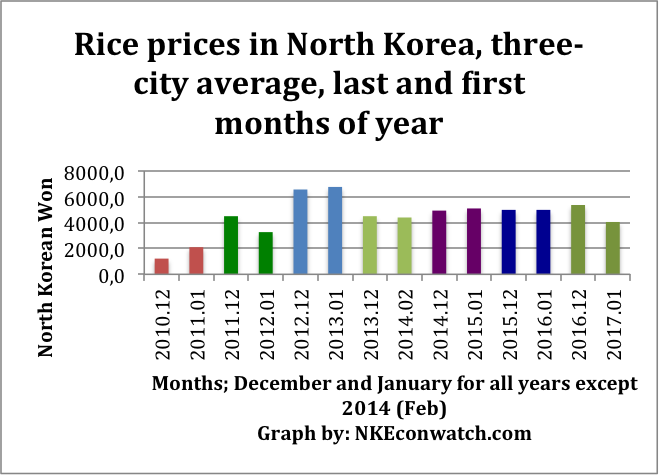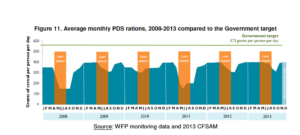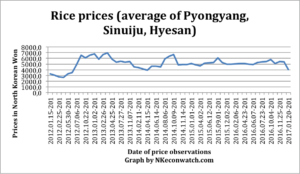Benjamin Katzeff Silberstein
FAO sounds the alarm bells yet again this year about drought in North Korea:
20 July 2017, Rome?- DPR Korea’s?crop production for 2017, including staple rice, maize, potatoes and soybean, has been severely damaged by prolonged dry weather conditions, threatening food security for a large part of its population, according to a?new FAO update?prepared in collaboration with the European Commission’s Joint Research Centre.
Rainfall from April to June in key crop producing areas in Democratic People’s Republic of Korea?were well below the long-term average, severely disrupting planting activities and damaging the 2017 main season crops.
“So far, seasonal rainfall in main cereal producing areas have been below the level of 2001, when cereal production dropped to the unprecedented level of only two million tonnes, causing a sharp deterioration in food security conditions of a large part of the population,” said Vincent Martin, FAO Representative in China and DPR Korea.
Food shortages during ongoing lean season
The severe dry spell also affected the 2016/17 early season crops which were harvested in June and include wheat, barley and potatoes. According to FAO’s latest estimates, production of 2017 early season crops has plunged by over 30 percent, from the previous year’s level of 450 000 tonnes to 310 000 tonnes.
Despite the fact that the early season harvest accounts for only 10 percent of the total annual cereal production, these crops are an important source of food during the lean season from May to September.
Concerns over the 2017 main season crops?
Although rains in the first half of July provided some relief, they were generally too late to allow normal planting and development of the 2017 main season crops, to be harvested in October-November.
The lack of rain is expected to have a serious impact on main season crops in the major cereal producing areas, including the provinces of South and North Pyongan, South and North Hwanghae and Nampo City, which normally account for close to two-thirds of overall main season cereal production.
With forecasts of reduced production of the 2017 main season crop, the food security situation is expected to further deteriorate during the 2017/18 marketing year and cereal import requirements are likely to increase.
Immediate interventions
“Immediate interventions are needed to support affected farmers and prevent undesirable coping strategies for the most vulnerable, such as reducing daily food intakes,” said Martin. “It is critical now that farmers receive appropriate and timely agricultural assistance, including irrigation equipment and machinery.”
According to the report, it is also essential to immediately start rehabilitating and upgrading irrigation schemes to reduce water losses and increase water availability.
Increased food imports, commercial or through food aid, would be required during the next three months at the peak of the lean season, ensuring adequate food supply for the most vulnerable, including children and elders.
Full article:
DPR Korea?s food production hit by the worst drought since 2001
Food and Agriculture Organization of the United Nations
2017-07-20
It is worth noting that many question marks exist on the FAO’s overall methodology. I’ve written about some of these issues before, here and here. Surely, market prices appear to be pointing up in North Korea this summer, but not toward any unprecedented levels. I see no reason to doubt what FAO says about weather conditions, but the consequences for North Korea’s food supply are less clearly outlined, especially since WFP and FAO, for political reasons, often are not able to fully take the market sector into account in their assessments.



